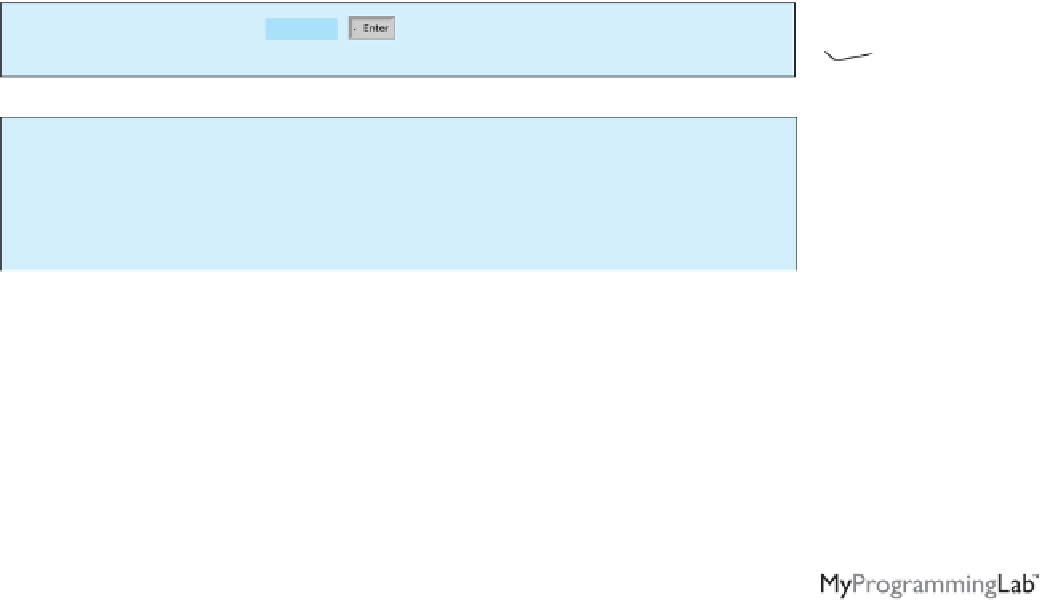Java Reference
In-Depth Information
Note
To assign a variable of the
int
type to a variable of the
short
or
byte
type, explicit
casting must be used. For example, the following statements have a compile error:
int
i =
1
;
byte
b = i;
// Error because explicit casting is required
However, so long as the integer literal is within the permissible range of the target vari-
able, explicit casting is not needed to assign an integer literal to a variable of the
short
or
byte
type (see Section 2.10, Numeric Literals).
The program in Listing 2.7 displays the sales tax with two digits after the decimal point.
L
ISTING
2.7
SalesTax.java
1
import
java.util.Scanner;
2
3
public class
SalesTax {
4
public static void
main(String[] args) {
5 Scanner input =
new
Scanner(System.in);
6
7 System.out.print(
"Enter purchase amount: "
);
8
double
purchaseAmount = input.nextDouble();
9
10
double
tax = purchaseAmount *
0.06
;
11 System.out.println(
"Sales tax is $"
+
12 }
13 }
casting
(
int
)(tax *
100
) /
100.0
);
Enter purchase amount:
Sales tax is $11.85
197.55
line#
purchaseAmount
tax
output
8
197.55
10
11.853
11
11.85
The variable
purchaseAmount
is
197.55
(line 8). The sales tax is
6%
of the purchase, so
the
tax
is evaluated as
11.853
(line 10). Note that
formatting numbers
tax * 100
is
1185.3
(int)(tax * 100)
is
1185
(int)(tax * 100) / 100.0
is
11.85
So, the statement in line 11 displays the tax
11.85
with two digits after the decimal point.
2.21
✓
✓
Can different types of numeric values be used together in a computation?
Check
2.22
Point
What does an explicit casting from a
double
to an
int
do with the fractional part of
the
double
value? Does casting change the variable being cast?
2.23
Show the following output:
float
f =
12.5F
;
int
i = (
int
)f;













